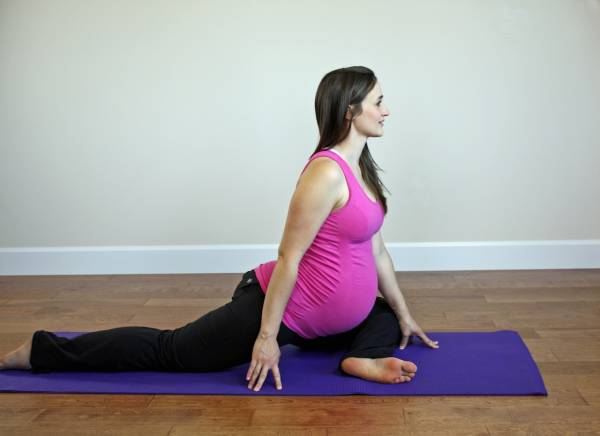Pregnancy and birth can be an overwhelming shift in perspective, particularly for active women who are used to feeling in control of their bodies. Although the “best” way to give birth is a topic of hot debate, I feel the most important aspect of a satisfying birth experience lies in how informed you feel about your options.
My own birth experiences with my three children were all quite different from each other. The first was a completely unplanned and unexpected emergency c-section. The second was also an emergency c-section, but I knew in advance that it was a likely possibility. My third was born via a natural hospital delivery.
These three experiences taught me that when you prepare for birth, you always have to be flexible and educate yourself about the birth process. Although textbooks and studies are good resources, I enjoyed reading about other women’s birth experiences and the lessons they drew from them. Here are a few of my own lessons I’d like to pass on after experiencing both cesarean and natural deliveries.
Preparation Focus: Strength
C-Section: Core Strength
If you know in advance a c-section is a likely option, focus on strengthening your deep abdominal muscles, and avoid exercises like crunches that increase intra-abdominal pressure. This goes for all pregnant women, but is especially crucial for c-section delivery, since some studies suggests having a cesarean section correlates with higher risk of diastasis recti. Some exercises to avoid include sit ups, hundreds, straight leg raises, toes to bar, and the Valsalva maneuver.
Prenatal yoga is an excellent form of exercise for all pregnant women, but especially those who plan to have a c-section. Not only is yoga an amazing total body workout, but it also integrates breathing and meditation practices that are invaluable before, during, and after a c-section. For best results, search for an instructor in your area who is also certified in prenatal yoga.
Vaginal Delivery: Leg Strength
I always heard leg strength was important for labor, but until my son was born I didn’t realize how important it is. Your legs need to be strong to carry your weight comfortably in the later stages of pregnancy, to get up out of bed and walk or move while in labor, and to be your best friend during the pushing stage of labor.
Condition your legs with regular squatting, lunges, and other staple lower-body training exercises throughout your pregnancy. And don’t forget about plain old walking, which helps bring the pelvis into proper alignment while also strengthening your legs.

Labor and Delivery Focus: Breath
C-Section: Long, Deep Breathing
My first c-section was an emergency section and happened about ten minutes after I arrived at the hospital, so I didn’t have much time to think. The second time around, I went into labor naturally but then had to wait about four hours before the surgery. I realized during those four hours that although having a c-section isn’t necessarily as physically demanding as natural labor, it is mentally demanding. It was scary to feel powerless and be strapped to a bed while doctors prepped for the delivery. I remember thinking to myself, “I’m not ready. I can’t do this.” I was anxious and worried about the epidural, the surgery, and the recovery to follow.
Your focus during labor and delivery will be creating a sense of calm serenity so you can enjoy the birth experience. While you wait for your baby to be born, take long, slow, deep breaths. Studies also suggest that listening to your favorite music can help alleviate anxiety before birth.
Vaginal Birth: Ujjayi Breathing
Ujjayi breathing, also known as “the victorious breath,” is commonly used in yoga. To perform ujjayi breathing, you basically breathe in through the nose while lightly tightening your throat to create a gentle noise that is often compared to ocean waves. When you exhale, maintain this tension in your throat and release the air through the nose. I used this method of breathing while in labor with my son. It helped me maintain my focus and calm, particularly through the transition phase. For intense contractions, I found it helpful to release the air forcefully through my mouth on the exhale.
Ujjayi breathing calms the body while also helping you maintain a sense of control over your breath. Combine ujjayi breath during intense contractions with deep breathing during the breaks between contractions. And just as in lifting and playing tennis, grunting is an effective way to recruit your abdominal muscles to aid in pushing.

Postpartum Focus: Reconnection
C-Section: Physical Therapy
When I had my first c-section in Belgium, it was standard practice for all women to be seen by a physical therapist while in the hospital and in the first two weeks after birth. I wish so badly that all women had this opportunity. A c-section is major abdominal surgery, and I never understood why physical therapy is not considered a given for post-cesarean care. If you can, find a physical therapist to help you regain your muscle control after your baby’s birth.
In the absence of physical therapy, there are a few exercises you should be able to begin in the first few weeks after delivery. These exercises might seem simple and basic, but they will help you reconnect with your core muscles and slowly build strength so you can perform daily activities with minimal pain and discomfort. Examples of exercises I did after my daughter’s birth included leg slides, rolling over from side to side, walking, and even practicing getting in and out of bed.

Vaginal Delivery: Pelvic Floor Therapy
Before my son was born, I remember hearing so much about how much easier it is to recover from vaginal birth. On many levels, I found this to be true. I was much more lucid in the first 24 hours after birth in the absence of an epidural, it was easier to accomplish daily tasks, and I was able to work out much sooner. However, there was one area of difficulty I hadn’t anticipated. Suffice it to say I dreaded sitting down, standing up, going to the bathroom, and God forbid, being intimate.
Since my son’s birth, I can’t tell you how many women I’ve encountered who have had a similar experience. If you have had c-sections in the past and plan to attempt a VBAC this time around, be aware that this specific area of recovery might be more difficult than it was after a cesarean. If you experience pain that lasts beyond six months postpartum and interferes with daily life, discuss your options with your doctor.
In the end, both delivery methods come with their own challenges and advantages. Regardless of how your baby makes his or her entry into the world, making an informed choice is the most important aspect of a fulfilling birth.
Photos courtesy of Shutterstock.






